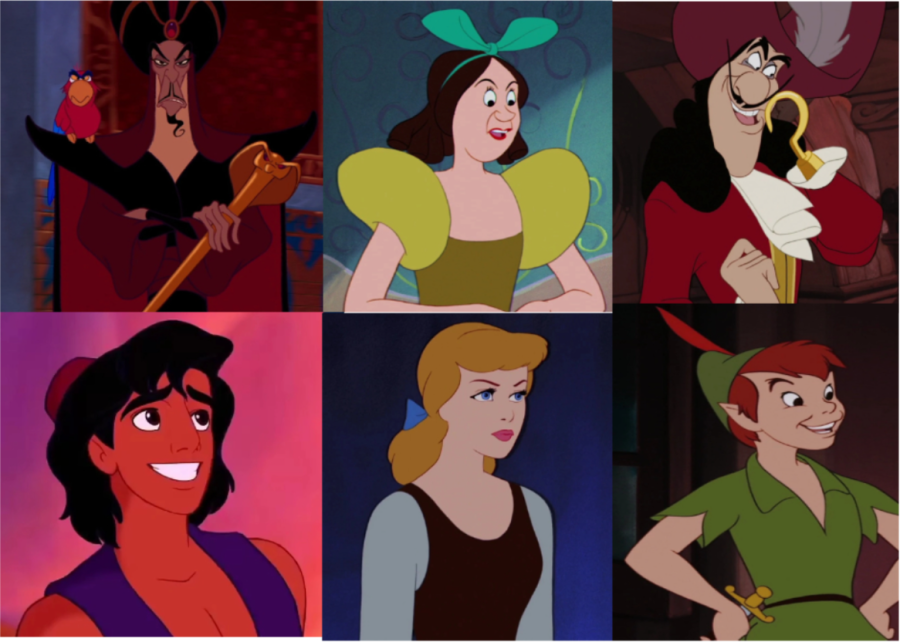Disney’s villains are all part of a story. Sometimes, a racist one.
Since its inception, Disney villains have been archetypally crafted to fit racist or sexuality-based stereotypes.
Let’s play a game: Spot the Disney villain. I’ll play a Disney film at random and you have to guess who the villains and heroes are as the film progresses.
Odds are, you’ll win with ease.
The way Disney characters are animated, from their facial features to the clothes and colors that they wear, is intentional. No corporation is without its biases, and Disney is no exception, using how they craft their villains to perpetuate stereotypes. This has been the case since their first film, “Snow White and the Seven Dwarfs,” in 1937.
Villains of contemporary and vintage Disney are archetypal at best, and lean on racist or sexuality-discriminatory stereotypes at worst. The meaning of “evil” has been rewritten in the past century through animated feature films, meaning black cloaks and looming thrones aren’t the only symbols of evil that are shown on screen.
So what does it mean to be a Disney villain?
Disney answers that question with a whole slew of villains with ethnic features such as large noses or darker skin. Captain Hook, Mother Gothel and even Gargamel from the “Smurfs” franchise, are all victims of the same Hollywood trend: creating villains out of anti-Semitic stereotypes.
Mother Gothel from “Tangled” perpetuates anti-semetic stereotypes, especially that of the old story of “blood libel”; historically, Jewish people have been accused of using the blood of Christian children for rituals. The story dates back to the Middle Ages, but Nazis used the racist stereotype as propaganda in the early 20th century.
Rapunzel’s story, which revolves around the young princess being kidnapped by the evil Mother Gothel, is directly linked to blood libel; Mother Gothel is the picture of evil, while also being the picture of how common anti-Semitism in film is.
The trend of villains being synonymous with large noses is no new idea, by the way.
There are countless examples: Captain Hook and Peter Pan. Snow White and The Evil Queen. Cinderella and her evil step-family. Aurora and Maleficent.
Disney has historically given characters large noses and other ethnic features to quickly and succinctly depict to audiences who the bad guys are.
What makes Cinderella’s ugly stepsisters so ugly, anyways? With their flowing gowns and animated hairdos, they differ from the titular Cinderella in only one way: their noses. Evil is synonymous with an ethnic, non-white feature right smack in the middle of a villain’s face.
1992’s “Aladdin” is another example of characters with non-white features being synonymous with evil. Aladdin and Jasmine, are paler than the villainous Jafar, who has a darker complexion and more ethnic features, such as a larger nose.
Disney also perpetuates queer-based stereotypes on screen. The most infamous example is Ursula, the antagonist of “The Little Mermaid,” who was modeled and animated after the drag queen Divine.
Being an animated character in a Disney film is a notoriously black-and-white affair; the formula is carefully crafted, and every film sends a message. These tales shaped millions of childhoods and are the soundtracks to a generation, but they come with ingrained flaws and discriminatory biases.
Although it is a difficult pill to swallow, the same films we danced and sang along with as children are, through a modern lens, quite problematic.
The truth is that because they are such huge parts of people’s childhoods, it’s not easy to forget the lingering messages that Disney movies imprint.
But it’s not a matter of forsaking the movies as a whole. Instead, it’s about bearing witness to the less-than-perfect aspects of the media we grew up consuming. The whole point, after all, of subtly coding the villains we see on screen is to perpetuate stereotypes surrounding them. By letting go of those stereotypes, we take away the power that films have to sway our mindsets.
We don’t have to stop enjoying them altogether — what we internalize from them is what matters.




